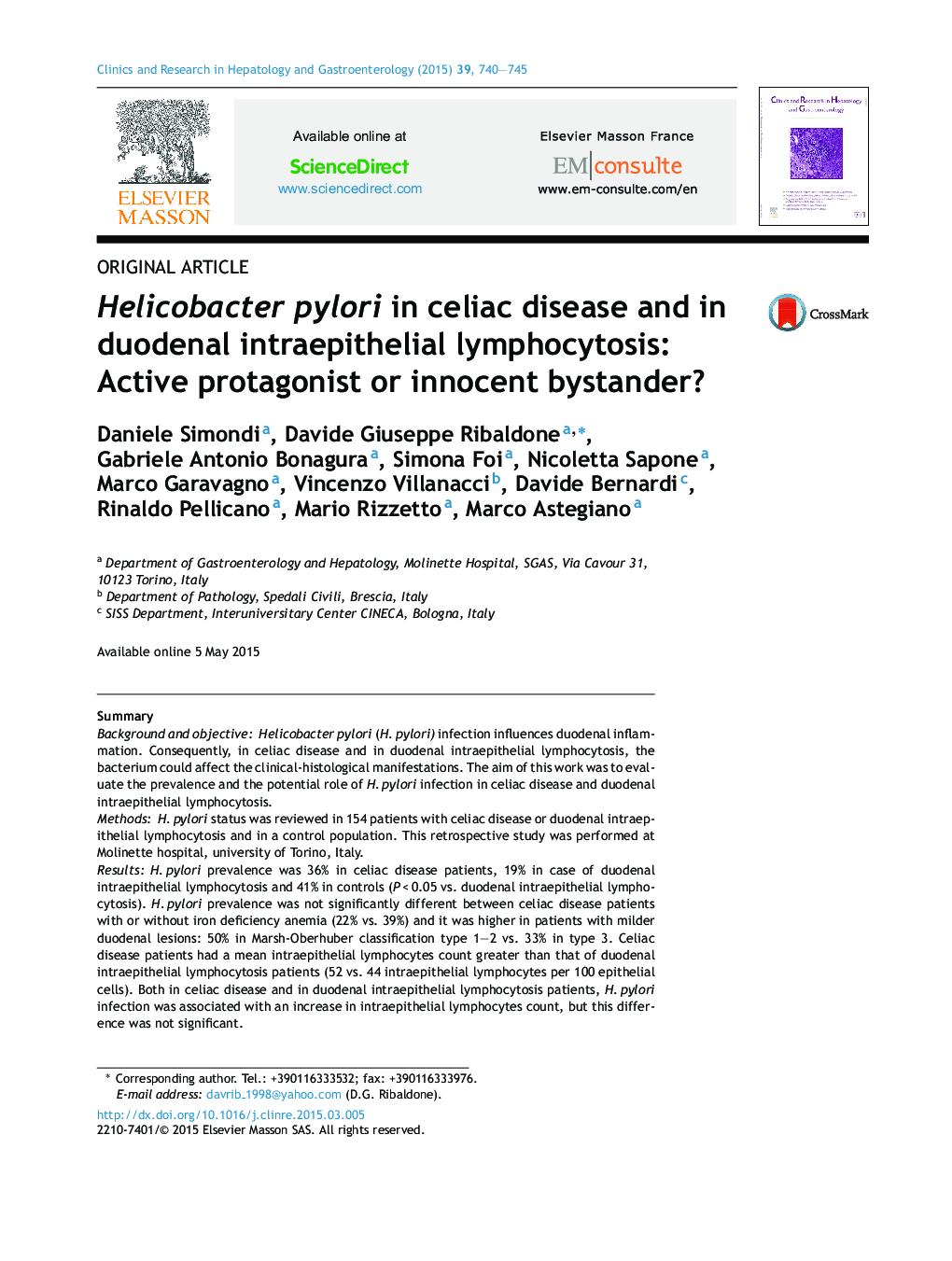| Article ID | Journal | Published Year | Pages | File Type |
|---|---|---|---|---|
| 3286054 | Clinics and Research in Hepatology and Gastroenterology | 2015 | 6 Pages |
SummaryBackground and objectiveHelicobacter pylori (H. pylori) infection influences duodenal inflammation. Consequently, in celiac disease and in duodenal intraepithelial lymphocytosis, the bacterium could affect the clinical-histological manifestations. The aim of this work was to evaluate the prevalence and the potential role of H. pylori infection in celiac disease and duodenal intraepithelial lymphocytosis.MethodsH. pylori status was reviewed in 154 patients with celiac disease or duodenal intraepithelial lymphocytosis and in a control population. This retrospective study was performed at Molinette hospital, university of Torino, Italy.ResultsH. pylori prevalence was 36% in celiac disease patients, 19% in case of duodenal intraepithelial lymphocytosis and 41% in controls (P < 0.05 vs. duodenal intraepithelial lymphocytosis). H. pylori prevalence was not significantly different between celiac disease patients with or without iron deficiency anemia (22% vs. 39%) and it was higher in patients with milder duodenal lesions: 50% in Marsh-Oberhuber classification type 1–2 vs. 33% in type 3. Celiac disease patients had a mean intraepithelial lymphocytes count greater than that of duodenal intraepithelial lymphocytosis patients (52 vs. 44 intraepithelial lymphocytes per 100 epithelial cells). Both in celiac disease and in duodenal intraepithelial lymphocytosis patients, H. pylori infection was associated with an increase in intraepithelial lymphocytes count, but this difference was not significant.ConclusionH. pylori prevalence was similar in celiac disease patients and in controls and higher in patients with milder duodenal lesions. There was no association between H. pylori infection and duodenal intraepithelial lymphocytosis.
